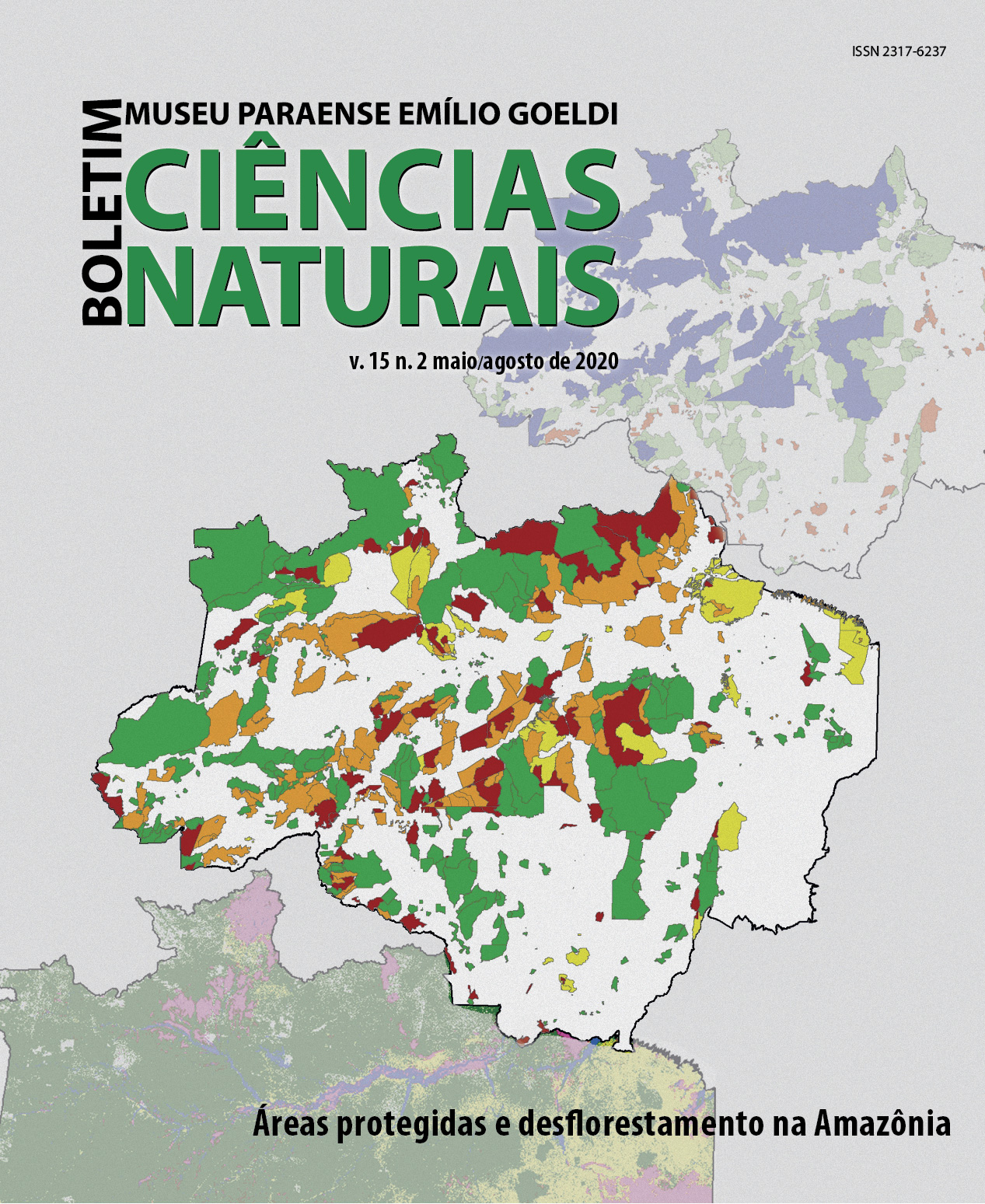Susceptibility to deforestation of protected areas in Brazil’s Legal Amazon
DOI:
https://doi.org/10.46357/bcnaturais.v15i2.200Keywords:
Conservation Units, Factor analysis, GeoprocessingAbstract
The establishment of a network of protected areas is fundamental for the conservation of the natural areas of the Amazon. We sought to evaluate which types of protected areas are most susceptible to deforestation using factor analysis applied to a range of spatial variables. The group of Sustainable Use Conservation Units (UCUSs) that included public and/or private domain categories (UC-US2), presented the lowest mean value of interpolated factorial synthesis, and it is expected that UCUSs belonging to this group are more susceptible to deforestation. The lowest values of interpolated factorial synthesis were observed predominantly in the areas of greater occupation. The category ‘high susceptibility to deforestation’ was predominant only in the UC-US2 group, representing more than two thirds of the areas (69.6%). In the region with the highest pressure per occupation, a higher percentage of categories of UCUS were observed that have the lowest number of use restrictions (APA, Arie and RPPN), possibly with the intention of exploiting these areas to the fullest extent.
Downloads
Published
Issue
Section
License
Publication means fully assigning and transferring all copyrights of the manuscript to the journal. The Liability Statement and
Assignment of Copyrights will be enclosed with the notice of acceptance. All the authors must sign the document and return it to the journal.








